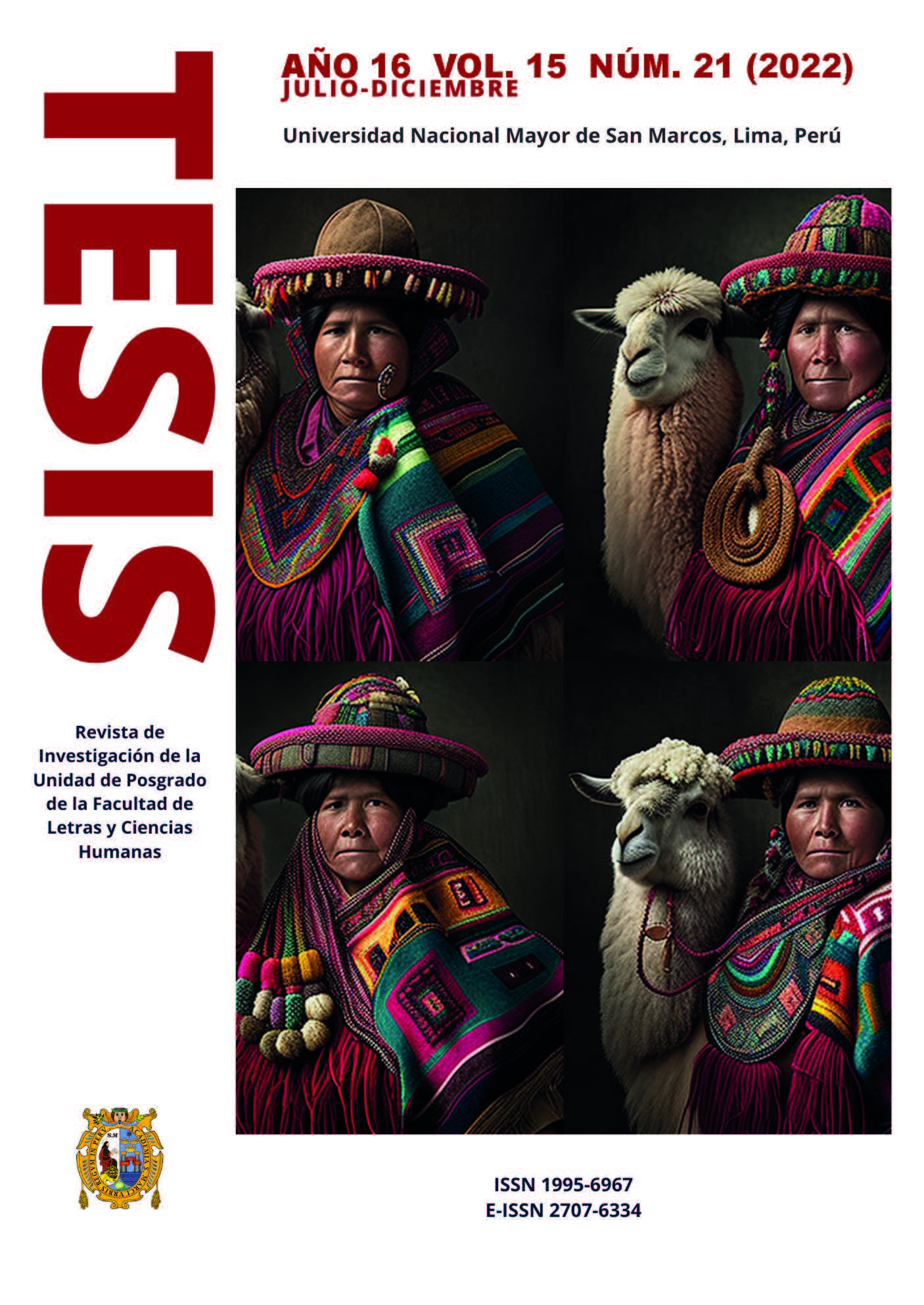Semantics of the terms of the human body in Quechua: metaphor, metonymy and conceptual interaction
DOI:
https://doi.org/10.15381/tesis.v15i21.25218Keywords:
polysemy, human body terms, Quechua, metaphor, metonymyAbstract
In Ayacucho-Chanca Quechua, corporeal terms evoke different domains or conceptual frameworks. The objective is to clarify the nature of the polysemic behavior of these corporeal terms. Theoretically, it starts from a set of principles that govern the phenomenon of polysemy within the framework of cognitive linguistics. Methodologically, the data has been obtained from an elicitation process. The results allow reaffirming the metaphor and metonymy as necessary procedures, but (at the same time) insufficient to explain the generation of new meanings. The explanation also requires an interactional process.
References
Brugman, C. (1981). The story of ‘over’: Polysemy, semantics, and the structure of the Lexicon. Garland.
Cerrón-Palomino, R. (1987). Lingüística quechua. C.E.R.A. Bartolomé de Las Casas.
Domínguez Chenguayen, F. J. (2017). Semántica de los lexemas somáticos polisémicos vinculados a la división topográfica de la cabeza en el quechua Ayacucho - Chanca: un enfoque cognitivo. [Tesis de maestría, Universidad Nacional Mayor de San Marcos]. https://cybertesis.unmsm.edu.pe/handle/20.500.12672/6818
Duquet, C. (2013). Análisis de las extensiones semánticas relativas a cuatro. [Tesis de maestría, Faculteit Letteren en Wijsbegeerte]. https://lib.ugent.be/fulltxt/RUG01/002/060/303/RUG01-002060303_2013_0001_AC.pdf
Evans, V. (2009). How words mean: Lexical concepts, cognitive models, and meaning construction. Oxford University Press.
Gálvez, I., Gálvez, J. y Domínguez Chenguayen, F. (2016). Aspectos semánticos de la polisemia somática en el quechua Ayacucho-Chanca: los casos de uma ‘cabeza’ y simi ‘boca’. Letras, 86(126), 84-103. http://www.scielo.org.pe/scielo.php?script=sci_arttext&pid=S2071-50722016000200005
Ibarretxe-Antuñano, I. (2010). Lexicografía y lingüística cognitiva. Revista Española de Lingüística Aplicada, 23, 195-214. https://dialnet.unirioja.es/metricas/documentos/ARTREV/3898715
Lakoff, G. (1987). Women, fire, and dangerous things: What categories reveal about the mind. University of Chicago Press.
Lakoff, G. y Jhonson, M. (1980). Metaphors we live by. University of Chicago Press.
Lewandowska-Tomaszczyk, B. (2007). Polysemy, prototypes, and radial categories. En D. Geeraerts y H. Cuyckens (eds.), The Handbook of Cognitive Linguistics (pp. 139-169). Oxford University Press.
Llanto, L. (2010). “Pacha” en la polisemia quechua: según el enfoque de la lingüística cognitiva. [Tesis de maestría, Universidad Nacional Mayor de San Marcos]. https://www.researchgate.net/publication/336171115_Pacha_en_la_polisemia_quechua_segun_el_enfoque_de_la_semantica_cognitiva
Parker, G. (1963). La clasificación genética de los dialectos quechuas. Revista del Museo Nacional, XXXII, 241-252
Ruiz de Mendoza, F. y Díez, O. (2002). Patterns of conceptual interaction. En R. Dirven y R. Pörings (eds.), Metaphor and metonymy in comparison and contrast (pp. 489-532). Mouton de Gruyter.
Sharifian, F, Dirven, Yu, N. y Niemeier, S. (2008). Culture, body, and language: Conceptualizations of internal body organs across cultures and languages. De Gruyter Mouton.
Soto, C. (1976b). Gramática quechua Ayacucho-Chanca. Ministerio de Educación.
Tyler, A. y Evans, V. (2003). The semantics of English prepositions: Spatial scenes, embodied meaning, and cognition. Cambridge University Press.
Torero, A. (1964). Los dialectos quechuas. Anales Científicos, 2, 446-478.
Downloads
Published
Issue
Section
License
Copyright (c) 2023 Frank Joseph Domínguez Chenguayen, Manuel Eulogio Conde Marcos

This work is licensed under a Creative Commons Attribution 4.0 International License.
THE AUTHORS RETAIN THEIR RIGHTS:
(a) The authors retain their trademark and patent rights, and also on any process or procedure described in the article.
(b) The authors retain the right to share, copy, distribute, execute and publicly communicate the article published in Tesis (Lima) (in example, depositing the article in an institutional repository or publish it in a book), with recognition of its initial publication in the Tesis (Lima).
(c) The authors retain the right to make a later publication of their work, to use the article or any part of it (for example: a compilation of their works, notes for conferences, thesis, or for a book), provided that they indicate the source of publication (authors of the work, magazine, volume, number and date).






